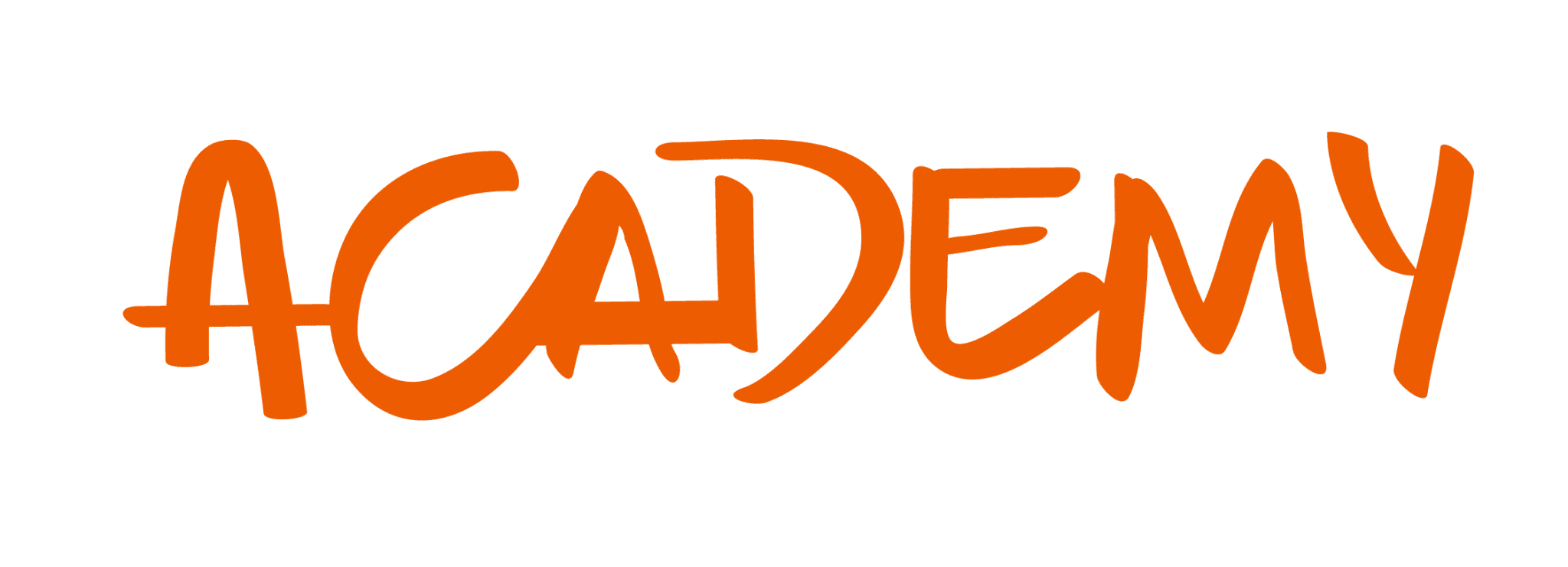Importance of Team Collaboration
Teams are the core of any business, bringing talent together to unlock the potential of their collective skills and build new solutions for the challenges your organization faces. As every industry embraces the distributed team concept, that talent may be dispersed across a city, a region, even across the world, and getting the best from them is crucial for business success.
In a study of C-level executives about teamwork, 73% noted that their business would have more success if employees were able to work more collaboratively, while 56% believed increased collaboration would have the biggest impact on overall profitability.
A dysfunctional team becomes less than the sum of its parts, not just in terms of efficiency and pure output, but in its creativity, vision, and innovation. However, in a pressured environment, and with a dispersed team, it can be tempting for leaders to ignore disharmony in the hope that it will disappear by itself, something which rarely actually works.
In fact, rather than firefighting problems, team managers should be actively promoting collaboration. Not only does active collaboration assist in overall productivity, but the process itself combats many other challenges teams face including aiding with team-building and cohesiveness, whether operating from the same space or in a distributed model.
To do this effectively it is important to understand the benefits of collaboration strategies, and the collaboration tools you have access to that both encourage and support that collaboration across teams even if they are not necessarily in the same location. Just as importantly, knowing how not to approach collaboration and the pitfalls of a failed collaboration process, can help ensure that issues are spotted early and avoided.
Characteristics of good team collaboration
When discussing the best approach, and benefits to, team collaboration, there is an important foundation for building that knowledge. That is an insight into what effective team collaboration actually looks like. For leaders, knowing the ideal outcome is essential in recognizing when you have problems, and where those problems are coming from.
Clear Direction
A successful team that works well together has a clear path, they know the task at hand and have a strategy to accomplish it. Importantly for managers and team leaders, ensuring that clear direction begins before the team is formed.
Deciding on team goals and expected outcomes should be the first action in team creation. Once in place, then build a team that has the skillset to accomplish those goals and outcomes. With the right skills in place, you can allow the team some flexibility to find the best path to the established destination, which creates a natural collaboration environment that promotes effective teamwork and allows members of the team to achieve their targets.
Established Role Definition
Creating a team to achieve your set goals encourages successful collaboration through that clear direction, but also ensures that team members have defined roles. Individuals who are clear on why they are in the team, why their skills matter and the way in which they can be used within the team environment have more confidence in themselves and are able to work together much more efficiently.
As the project progresses, roles may change, but having those established parameters allows the team to develop the knowledge-sharing processes they need quickly and effectively.
Confidence in Communications
Team communication is essential, especially a distributed team connecting digitally, and it is central to collaboration too. However, not all communication is the same, and for a team to build an effective collaborative culture, that means open, honest communications that allow the team to build trust and camaraderie, the team spirit that helps all pull together in the same direction.
When communication about business matters, transparency is essential, but also encouraging general communication and brainstorming sessions is important too. Ongoing interaction, regardless of content, is not only part of building team spirit but is especially important for distributed teams where members are working from homes or other locations rather than sharing a workspace, leaving them relatively isolated.
While studies have shown that distributed teams and home workers display improved productivity compared to an office-based employee, being separated from others does bring challenges. Constant communications avoid the feeling of isolation and help maintain positivity and motivation for remote workers while giving them the opportunity to share knowledge and build good working connections among the team.
Encouraging Input and Ideas
In tandem with open, honest communication is the willingness to hear new ideas or views. Workplace collaboration doesn’t just mean agreeing with each other, with defined goals, a big part of collaboration is finding the best route to those goals through collective problem solving and the ability to share ideas. This is only possible when all team members feel valued and comfortable in giving their input.
Key to this is encouraging team members to voice opinions, never being dismissive of an alternative approach and exploring the suggested possibilities. When team members feel confident in offering their ideas, you enjoy a variety of inputs for brainstorm sessions, which can uncover new approaches that benefit the entire team. In this way, you will never miss out on the best approach to any challenge.
Collaboration Itself
Finally, while this may seem redundant, the best characteristic of a collaborative team is collaboration. Like any skill, the benefits of team collaboration are improved the more you do it, and for any team, the more they collaborate, the more they want to collaborate.
With leadership encouraging collaboration from the early stages, the culture of collaboration takes hold and becomes a core part of the team’s basic routine.
What kind of tools allow team collaboration?
A key part of the collaborative process, especially for remote teams, is the collaboration software such as video conferencing and text chat tools that allow team members to come together and interact, discuss ideas and work through challenges either as an entire team or in smaller groups as needed.
It is important to have multiple options here, while the video is an ideal medium for real-time communications, supplementing with text-based communication tools ensures that those conversations can carry on throughout the day without disrupting workflow. In cases of teams that include members from different time zones, those text-based communications tools provide the platform for communications between team members, even if they are on different continents.
Communication is only part of the story when it comes to collaboration, of course, sharing files, notes and so on is crucial too. Also, project management software is crucial to ensure that the workload is distributed effectively, and the team is on schedule to deliver on time. Finally, knowing who is working on what, and how long each task has taken is essential for effective team management.
In terms of practical tools to support collaboration then, teams are able to use:
- File Sharing
- Project Management
- Resource Management
- Time Tracking
- Communication
- Task Management
While there are a number of tools that can accomplish these tasks, having a single platform for all such file and personal interactions is the best approach. Not only does a single tool make for easier management and oversight, and often reduce costs too, but it is simply much easier for your team. Learning one interface is always easier than learning several, and it provides familiarity that becomes second nature quickly when used every day.
Team collaboration mistakes to avoid
With the advantages of workplace collaboration of benefit to both the team and ultimately the organization, it is something that most leaders want to instill from the beginning of the project. However, while the goals for collaboration are clear, the reality is that approaching it the wrong way can lead to significant problems, and often cause severe disruption to team cohesion too.
To ensure that your team collaboration is built the right way, here are the team collaboration mistakes you should avoid, and how to make sure you do.
Lacking Strategy
For any team, having a defined plan is essential to efficient performance, and for distributed teams, this is even more important. Forming a team who may have never met, and then presenting a new project without having any strategy in place to accomplish goals only leads to confusion. Importantly, without that defined approach to work from, team members become focused on finding ways to overcome the challenges in front of them rather than working together on the broader strategy to reach the desired outcomes.
We have already talked about crafting a strategy and defining endpoints before building the team, it not only helps with shaping the team in terms of deciding its members, but it sets a platform that encourages collaboration too.
Ignoring Team Input
This may seem like stating the obvious, but it is far more common than you may imagine. If team members’ input is always ignored, eventually they become demotivated and stop providing it. A team that is not talking are not collaborating, and risk becoming hyper-focused on their own task without considering the impact on others. The opposite of the collaboration that the team needs.
It is crucial that in any communications, all voices are listened to, that ideas are considered and that everyone on the team feels heard and valued. This brings other aspects of the team interactions too, and it shows the value of a supportive environment, allowing for improved brainstorm sessions and other essential foundations of successful collaboration.
Focusing on the Competitive
An area that is a common failing is the need to introduce competition. If leadership focus on individual achievements or over-emphasizes competition between team members, it reduces the trust between team members and reduces the initiative for collaboration.
As a project manager or team leader, encouraging collaboration is at the core of your responsibilities, so while individual excellence is important, a balance must be struck that emphasizes the overall goal of the team and the importance of pooling talent and vision to get there.
A Failure to utilize all available tools
One of the simplest ways in which collaboration can fail a team is by not providing or encouraging the use of the best team collaboration tools available to support it. This can result in huge problems for a project, for instance with multiple people working on the same task, but not using up-to-date shared documents, whether repeated work or simply work that is of no value for being based on already outdated data or content.
This can frustrate and demotivate team members, where collaboration allows everything that they do contribute and have value for the project.
Making sure the tools are available and adopted by all team members needs to be integral to the onboarding process at the team launch, ensuring that collaboration is built into the daily routine for your team.
Too many meetings
When talking about collaboration, its easy to focus on the need for everyone to discuss every aspect of the project. But what that leads to is endless team meetings, all the time, about everything. In this scenario, your team spends more time in meetings than doing actual work, productivity suffers and because everyone ends up under severe time pressure, the other, productive elements of collaboration, group work, sharing results and so on tend to be overlooked. The result, less collaboration where it matters, less work and frustrated teams.
Keep team meeting numbers down to a couple a week, and then keep to an itinerary on each one. This ensures that they are appreciated, the importance is recognized, and they produce results that matter.
Advantages of boosting team collaboration
Leadership see collaboration in terms of improved success, and as the survey mentioned previously showed, believe that increasing collaboration increases success. But collaboration affects everything your team does, so how does that success manifest?
Improved Productivity
Increasing collaboration adds efficiency to your team’s work, reducing wasted time repeating others work, or building on out-of-date ideas, and ensures your team is working together towards a common goal. This increases productivity, ensuring you are maximizing the potential of the entire team.
Increased profitability
With the collaborative environment delivering higher productivity and faster results, improved collaboration brings increased profitability to any organization. Because team collaboration elevates team performance, it allows each individual to achieve their potential, delivering more for the team and the business without extra expenditure.
Improved Morale
While collaboration is crucial for any team, for a distributed team it is particularly important beyond the idea of success. Working from home or other remote work situations can be challenging, with individuals finding it difficult to maintain motivation and morale being an issue over time. However, with collaboration that feeling of being alone with challenges is removed, helping each team member to enjoy the positive support of others, improving morale and maintaining motivation, which itself boosts focus and improves performance.
Delegate effectively
A team embracing collaboration has great communication, inter-team trust and a strong sense of teamwork and togetherness in their push towards the required goals. This makes it much easier for leaders to delegate effectively, with clear responsibilities for team members ensuring that tasks can be more easily assigned to maintain forward motion while taking advantage of the variety of skills within the team.
Avoid micromanaging
One of the dangers of leading a team is micromanagement, the need to take control of every aspect of a project to ensure it runs the way you wish it to. However, with collaboration, you have clear goals and can actively see progress, see groups and individual’s performance and so on, without the need to micromanage any aspect of the project. With the team actively working together to deliver results, whether a startup team or an established group, you can focus on the broader strategy rather than get caught up in the day-to-day challenges your team are dealing with themselves.
The upside to this is leaders having more time to manage general direction, and therefore reducing wasted time in being involved in things that can be taken care of by others, while better liaising between the team and project stakeholders.
Identify poor performance
So far, we have talked mostly about the improved performance, profitability and so on that collaboration brings, the successes. However, collaboration also highlights areas of poor performance. This could be an individual, a group, even a process or strategy, and the impact can range from sub-optimal performance, your team having less time to deliver results, or even have a negative effect on the work environment itself. However, with improved collaboration throughout the team, a reduction in performance is easily identified, giving an opportunity to resolve it quickly.
When things are not working, the ability to address the situation quickly can have a dramatic effect on team productivity. Whether the outcome is additional training for an individual or group, a change in tools used, or a rethink of an approach to a specific challenge, collaboration allows a team to adjust to that new direction quickly too, lowering the impact of the issue.
Take the pain out of meetings
Finally, while meetings would seem to be the ideal platform for collaboration, they can also be the source of frustration and annoyance for your team. Too many meetings that eat into their work time, meetings that don’t stick to any structure and meander around several points without solving any are just some of the issues that most of us have experienced at one time or another. Alienating team members through a failure to listen, or your team generally starting to feel that they are being ignored all lead to issues further down the line with morale and motivation, and that can ultimately be detrimental to the overall team performance.
But with a collaborative team, this is avoided. With a defined structure, a team in constant communication, and leadership who value input, all traits of that collaboration, meetings become fewer in number and more effective in practice.
Conclusion
Team Collaboration is key to the success of any business today. It is a type of work culture that must be fostered for which they must realize the appropriate tools to achieve it. COR is an excellent ally in this sense, because it not only allows you to manage tasks, track time, and manage resources intelligently with its Artificial Intelligence, but also offers the option of giving clients personalized access to projects so that they can also participate in that collaboration. and provide transparency in the flow of work.
If you would like to know more about the reach of our tool, schedule a Demo!















